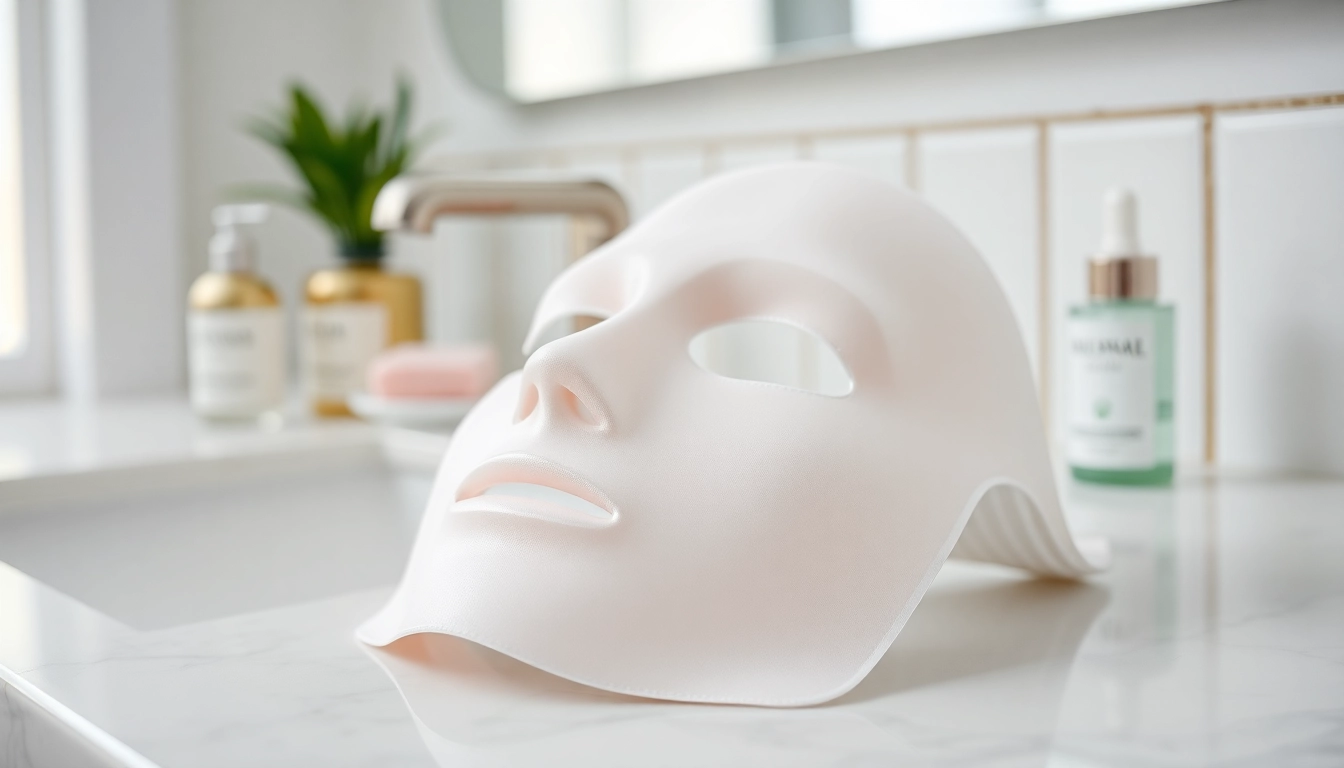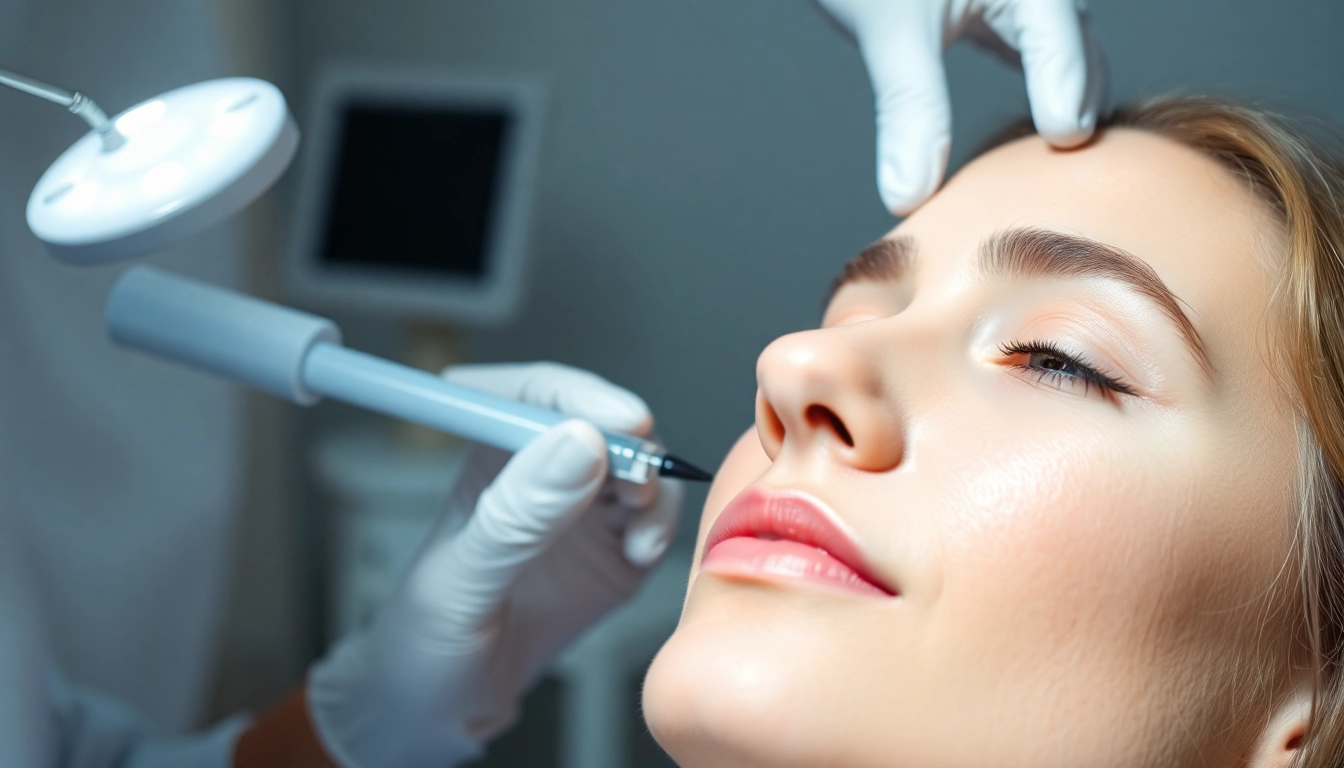Understanding Sheet Masks: Benefits and Types
What is a Sheet Mask?
A sheet mask is a fabricated cloth or paper product soaked in a nutrient-rich serum that delivers targeted ingredients directly to the skin. The mask is designed to adhere to the face, covering key areas like the eyes, cheeks, and mouth, while allowing the serum to absorb effectively. These masks can be made from various materials including cotton, hydrogel, and bio-cellulose, each having its unique benefits based on absorption rates and suitability for different skin types. With an array of formulations available, sheet masks have become a staple in the skincare routines of many, offering a convenient and effective way to boost hydration and nourishment.
Key Benefits of Using Sheet Masks
Sheet masks offer several advantages that make them a popular choice in skincare. Here are some key benefits:
- Intense Hydration: The concentrated serums in sheet masks provide a dousing of moisture, which is especially beneficial for dry skin types.
- Convenience: Unlike traditional masks that require mixing or applying with brushes, sheet masks are pre-soaked and simple to use, making them perfect for on-the-go treatments.
- Targeted Treatments: Many sheet masks are infused with specific ingredients tailored to various skin concerns—such as brightening, firming, or soothing—enabling targeted skincare.
- Cooling Effect: The application of a cold sheet mask can provide a refreshing cooling sensation to the skin, which may reduce puffiness and inflammation.
- Time-Saving: Typically, sheet masks require just 15-30 minutes of application time, fitting neatly into busy schedules.
Varieties of Sheet Masks Available
The variety of sheet masks has expanded significantly, catering to diverse skincare needs. Some popular types include:
- Hydrating Masks: Infused with humectants like hyaluronic acid, these masks are designed to replenish water levels in the skin.
- Brightening Masks: Often containing vitamin C or niacinamide, these masks aim to enhance radiance and even out skin tone.
- Anti-Aging Masks: Formulated with ingredients such as peptides and collagen, these masks focus on reducing fine lines and enhancing skin elasticity.
- Soothing Masks: With calming agents like aloe vera or chamomile, these are ideal for sensitive or irritated skin.
- Exfoliating Masks: Some masks include mild acids or enzymes that help gently exfoliate the skin while providing moisturizing benefits.
Choosing the Right Sheet Mask for Your Skin Type
Oily Skin: Best Sheet Masks for Control
For those with oily skin, the key is to find sheet masks that help balance oil production without stripping the skin of essential moisture. Look for masks that contain:
- Salicylic Acid: This ingredient helps unclog pores and control breakouts.
- Tea Tree Oil: Known for its antibacterial properties, it can help keep acne at bay.
- Clay Extracts: These can absorb excess oil and purify the skin, providing a matte finish.
Using these masks regularly can help maintain a clear complexion without eluding hydration.
Dry Skin: Hydration-Focused Sheet Masks
People with dry skin should seek out masks that deliver deep hydration and nourishment. The ideal ingredients include:
- Hyaluronic Acid: A powerful humectant that attracts moisture to the skin.
- Glycerin: This ingredient not only hydrates but also helps to maintain the skin’s moisture barrier.
- Shea Butter: Known for its nourishing properties, this can help soothe and hydrate parched skin.
Hydration-focused sheet masks can significantly improve skin texture and elasticity, leading to a plumper appearance.
Sensitive Skin: Gentle Sheet Masks to Consider
For sensitive skin, the choice of sheet mask is crucial to avoid irritation. Consider masks with:
- Aloe Vera: Renowned for its soothing properties, aloe can help calm redness and irritation.
- Centella Asiatica: Also known as Cica, this ingredient is popular for its healing properties.
- Fragrance-Free Formulas: Avoiding added fragrances can help minimize potential allergic reactions or sensitivities.
Gentle formulations can effectively nourish and heal sensitive skin without exacerbating any issues.
How to Use Sheet Masks Effectively
Preparation: Setting the Stage for Skincare
Preparation is key when using sheet masks for the best results. Here’s how to set the stage:
- Cleanse Your Face: Start with a gentle cleanser to remove dirt, oil, and makeup, allowing the mask to penetrate effectively.
- Exfoliate: If your skin tolerates it, exfoliating beforehand can enhance absorption by removing dead skin cells.
- Tone: Applying a toner helps to balance the skin’s pH and prime it for better serum absorption.
Application Techniques for Best Results
To maximize the efficacy of a sheet mask, follow these application techniques:
- Proper Alignment: Ensure that the mask is correctly aligned with your facial features, making sure it adheres well.
- Press Gently: Once applied, lightly press the mask against your skin to enhance contact and absorption.
- Relax: Take this time to relax; many users find that this enhances the experience while the mask works its magic.
Aftercare: Following Up with Moisturizers
After removing the sheet mask, follow up with aftercare to seal in the benefits:
- Pat the Serum: Gently pat any remaining serum into your skin to ensure maximum absorption.
- Moisturize: Apply a lightweight moisturizer that complements the serum’s properties to lock in hydration.
- SPF Application: If you’re using the mask during the day, finish with a broad-spectrum sunscreen for protection.
Common Mistakes When Using Sheet Masks
Overuse: Understanding Frequency
While sheet masks are beneficial, overusing them can lead to issues like skin irritation or imbalances. It’s best to limit usage to a few times a week depending on your skin’s tolerance and needs. Monitor your skin’s response and adjust accordingly.
Ignoring Ingredients: What to Watch For
Not all sheet masks are created equal; hence, it’s vital to read the ingredient list. Look out for:
- Alcohols: These can be drying and irritating for some skin types.
- Fragrance: Synthetic fragrances may trigger allergic reactions or sensitivities.
- Pore-Clogging Ingredients: Ingredients like heavy oils can exacerbate breakouts in oily skin.
Understanding ingredients helps ensure you’re choosing products that will benefit your skin rather than harm it.
Skipping Skin Prep: Why It Matters
Neglecting to prepare your skin before application can hinder the mask’s effectiveness. Preparation helps to:
- Remove barriers to skincare absorption, ensuring the mask’s ingredients can penetrate the skin effectively.
- Enhance the overall experience by preparing the skin for the intended benefits.
Proper skin prep sets a solid foundation for maximizing the advantages of sheet masks.
Advanced Skincare with Sheet Masks
Integrating Sheet Masks into Your Routine
Sheet masks can be seamlessly integrated into both morning and evening skincare routines. A strategic approach includes:
- Morning Boost: Use a brightening sheet mask in the morning to prep your skin for makeup and enhance radiance.
- Nighttime Recovery: Utilize a hydrating or calming mask in the evening to support skin recovery while you sleep.
- Targeted Treatments: Alternate masks focused on specific skin concerns—like hydration one night, anti-aging the next—to create a balanced regimen.
DIY Sheet Mask Recipes for Customization
For those who enjoy crafting their skincare, DIY sheet masks can be a fantastic option. Here are a couple of simple recipes:
- Hydrating Green Tea Mask:
- Steep one green tea bag in hot water.
- Mix with a tablespoon of honey and a tablespoon of aloe vera gel.
- Soak a cotton sheet in the mixture and apply for 20-30 minutes.
- Soothing Cucumber Mask:
- Puree half a cucumber and mix it with a tablespoon of yogurt.
- Soak a sheet in the mixture and leave it on the face for 20 minutes.
These homemade options allow for customization based on personal preference and individual skin needs.
Evaluating Results: Knowing When to Adjust
It’s essential to monitor how your skin responds to sheet masks over time. Pay attention to:
- Improvements in hydration, texture, and tone.
- Any adverse reactions such as redness or irritation.
- Whether your skin feels stripped or overly oily after use.
Adjust the frequency and type of masks used based on your skin’s changing needs, ensuring your skincare routine remains effective and beneficial.




